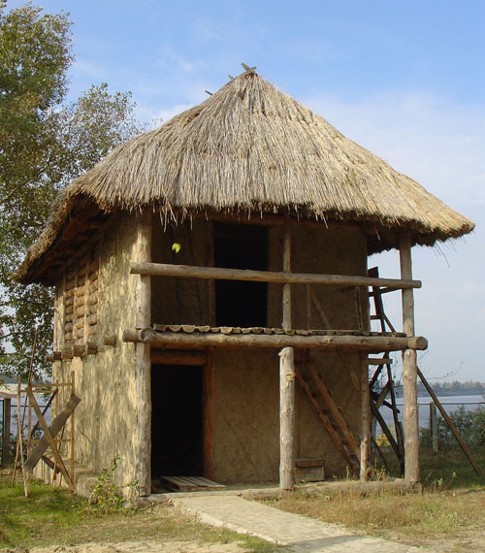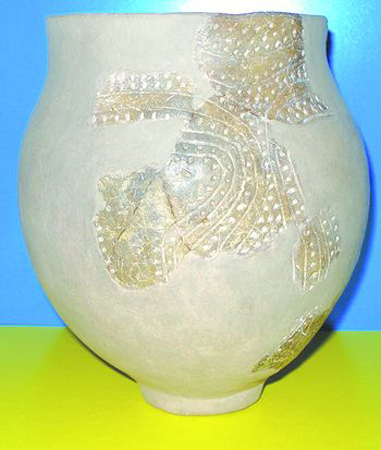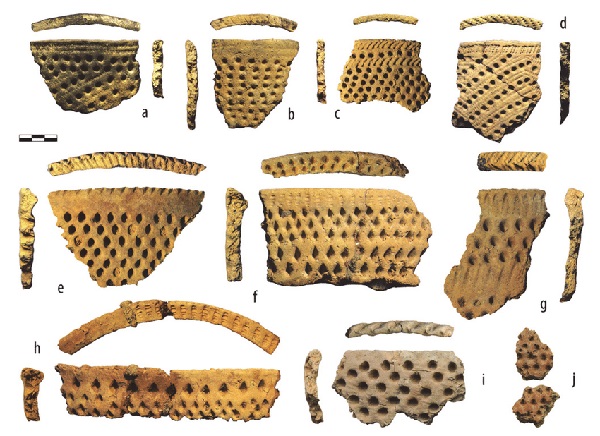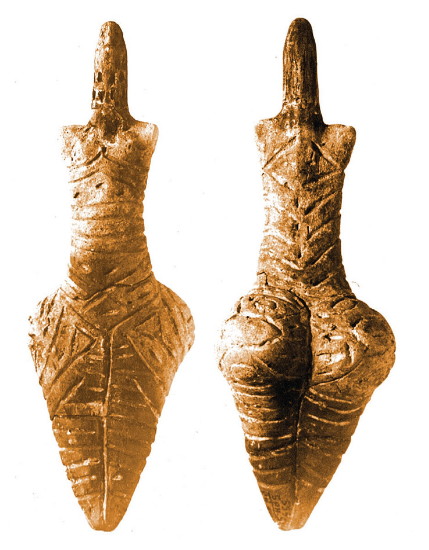Neolithic Period
Neolithic Period or New Stone Age [неоліт; neolit]. The closing phase of the Stone Age that followed the Mesolithic Period. It began in the Near East (Levant and Anatolia) around 10,000 BC as a result of a series of fundamental transformations in the lifestyles of local hunter-gatherer communities that gave rise to the process frequently referred to as ‘the Neolithic revolution.’ These foundational societal changes included the domestication of animals, the development of agriculture and pottery manufacturing, the emergence of increasingly complex systems of religious belief and organized religious life, the establishment of sedentary agriculturally based settlements, the use of polishing techniques for stone tools, and the growth of tribal social orders. This epoch was also marked by the existence of a greater diversity of cultures than in either the Paleolithic Period or Mesolithic Period.
The Neolithic innovations later spread to other regions of the world through mass migrations of Neolithic populations as well as through the various forms of cultural diffusion. In Ukraine the first Neolithic settlements appeared in the early 6th millennium BC in Transcarpathia, in the vicinity of today’s city of Berehove. These were the northernmost outposts of the Körös or Criş culture whose epicentre was located in Transylvania in today’s eastern Hungary and western Romania. Other Körös/Criş migrants settled on the territory of Moldavia and, through cultural contacts, brought about the Neolithisation of the Mesolithic hunters and gatherers who lived on the left bank of the Dnister River. This resulted in the formation of the earliest ‘autochtonous’ Neolithic culture on the Ukrainian territories: the Boh-Dnister culture. This culture, in turn, passed on some of the Neolithic innovations to the Sursk-Dnipro culture located on the lower Dnipro River, particularly around the Dnipro Rapids, and the Dnipro-Donets culture that was dominant in north-central Ukraine. The Boh-Dnister culture lasted from the early 6th millennium BC to the end of that millennium, when it was assimilated into the more culturally advanced Trypillia culture.
Another major Neolithic culture on the Ukrainian territory in the 6th millennium BC was the Linear Pottery culture. Originally formed in the region of the middle Danube River, this culture spread over a vast region from the Netherlands in the west to western Ukraine in the east. In Ukraine the settlements of these culture were primarily concentrated in Volhynia (reaching as far as today’s city of Zhytomyr), Galicia, and Podilia; individual southernmost settlements of the Linear Pottery culture on the Ukrainian territory could be found also in Bessarabia in today’s Odesa oblast.
In the early stages of its existence on Ukrainian territories (end of the 6th and beginning of the 5th millennium), the agrarian Trypillia culture was Neolithic in its stage of development. It was by far the most developed culture of its time in the Ukrainian lands. Its development soon marked the beginning of the Eneolithic Period (Copper Age) in Ukraine, and the culture existed throughout most of Right-Bank Ukraine until the Bronze Age. Other groups that existed during the time of the Eneolithic Period, but remained largely on the Neolithic level were the above-mentioned Dnipro-Donets culture, the Serednii Stih culture along the Dnipro River, the Azov-Dnipro culture on the north coast of the Sea of Azov, the Tash-Air culture in the Crimea, the Tisza culture in Transcarpathia, the Funnelbeaker culture in northwestern Volhynia, and the essentially Mesolithic in its character Pit-Comb Ware culture in northern Polisia.
Technically, the Neolithic Period ended with the introduction of metal technology during the Eneolithic Period or the Bronze Age.
BIBLIOGRAPHY
Danilenko, V. Neolit Ukrainy (Kyiv 1969)
Arkheolohiia Ukraïns'koï RSR, vol 1 (Kyiv 1971)
Telehin, D. ‘Osnovni periody istorychnoho rozvytku naselennia terytorii Ukraïny v V – pershii polovyni IV tys. do n. e.’ Arkheolohiia, 1992, no. 4
Zalizniak, L. ‘Neolityzatsiia Ukraïny: Vid "skhidnoho impul'su" do "balkanizatsii".’ Magisterium, 2018, vyp. 70
Marko Robert Stech
[This article was updated in 2022.]

.jpg)




.jpg)